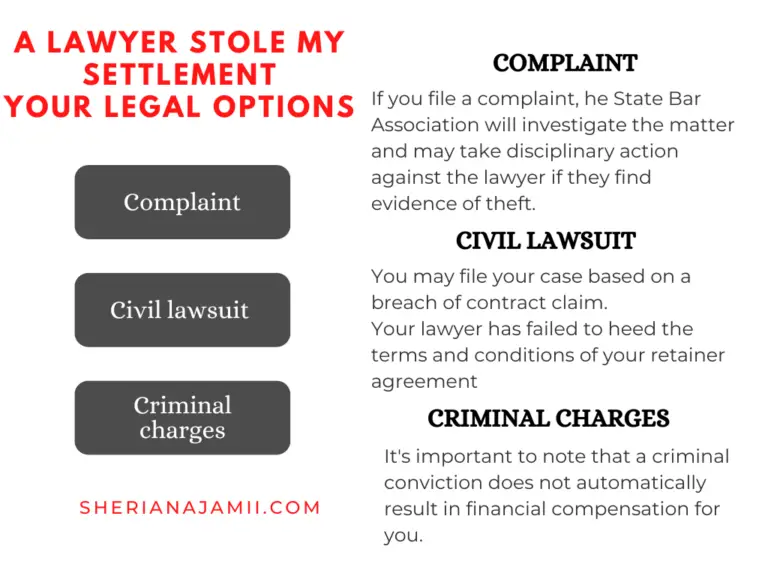This post covers Types of life insurance policies
There are several different forms of life insurance policies that can protect your family.
Which one should you buy?
Life insurance might be a popular concept that you have heard in your life.
The concept might sound technical for you to understand.
Transform Your Communication, Elevate Your Career!
Ready to take your professional communication skills to new heights? Dive into the world of persuasive business correspondence with my latest book, “From Pen to Profit: The Ultimate Guide to Crafting Persuasive Business Correspondence.”
![9 Types of life insurance policies [Buyer's Guide 2025] 2 from pen to profit 3D mult](https://sherianajamii.com/wp-content/uploads/2023/10/from-pen-to-profit-3D-mult-1280x774.png)
What You’ll Gain:
Worry not! Here I will explain what is life insurance and the types of life insurance in the simple way possible to make you understand.
Meaning of Life Insurance
Life insurance is a contract of insurance whereby the insurer (insurance company) in consideration of certain premiums undertakes to pay the assured (person/client/subscriber), an assignee or legal successor as the case may be of the assured in case of his death, a stated sum of money (payment in monthly basis) on the death of the assured, or on the expiry of a certain period of time whichever is the earlier.
In simple language, a life insurance policy is a guarantee to safeguard your loved ones financially in the event of your death.
In life insurance, the policy owner (assured person) must show a recognized interest in having the insured life continue.
This interest must be shown when the policy is purchased.
People are presumed to have an unlimited insurable interest in their own lives and may purchase any amount of insurance on their own lives that an insurer will issue.
Furthermore, the law presumes a husband and wife have an unlimited interest in each other’s life.
Beyond close family relationships, an insurable interest must be demonstrated, it will not be presumed to exist.
Interests that generally can be demonstrated include creditors in the lives of their debtors, partners in each other’s lives, and employers in the lives of their key employees.
The premiums charged for life insurance policies depend on the followings primary variables
- The age of the person whose life is to be insured
- Other significant health issues or conditions
- The duration of the term for which coverage is sought.
Types of Life Insurance Policies
The major types of life insurance policies include:
- Whole life policy
- endowment policy
- limited payment life policy
- convertible whole life policy
- joint policy
- annuity policy
- education endowment policy
- Final expense insurance
- Group life insurance
Whole Life Policy
This type of life insurance policy covers an insured person for his/her whole life.
With this policy, the insured person pays a fixed premium which accumulates saving from an invested portion of the premiums and receives a guaranteed benefit upon death to be paid to a named beneficiary.
Under this policy, the premium is payable throughout the life of the assured.
The sum assured becomes payable only on the death of the assured to his legal successor.
Endowment Policy
This is the type of life insurance that is payable either to the insured at the end of the policy period or to the insured beneficiary if the insured dies before the period ends.
In this case, the policy runs only for a limited period of up to a particular age.
The sum assured becomes payable after a specified number of years or on the death of the assured whichever is earlier.
Limited Payment Life Policy
This is the type of life insurance policy whereby the premium is payable for a specified number of years. (Example until the assured attaining a certain age) but the sum assured becomes payable only on the death of the assured.
Convertible Whole Life Policy
This is a life policy which on the face of it is treated as a whole life policy.
Under the terms of the policy, the assured is given a right (option) to convert the policy into an endowment policy after a certain period of time (say 5 years).
If that option will not be exercised, the policy continues as a whole life policy.
Joint Policy
With this type, an insurance policy is taken upon the joint lives of two or more persons.
The sum assured becomes payable at the ends of specified terms of years, or at the first death of either of the lives assured, whichever is the earlier, to the survivors.
This is particularly useful for a partner in a partnership firm, where the death of one partner will or may have serious financial repercussions for the other partner.
Annuity Policy
It is a kind of endowment policy with the difference that, the full amount of the policy is not payable in a lump sum but it is payable in a form of annuities [fixed periodical payments] for a specified number of years until the death of the assured.
Education Endowment Policy
This is a type of life insurance policy that is affected for the purpose of meeting the educational expenses of children.
In this case, the assured, insure his life but with different purposes i.e education. Such a policy is always for a specified period.
The premium is payable for the selected terms of years or until the death of the policyholder if it occurs earlier within that period.
The sum assured is payable only after the expiry of the fixed term even if the policyholder dies earlier.
Final expense insurance
Final expense insurance is a type of life insurance only meant to pay for expenses related to the passing of a person, like funeral and burial charges.
Although there is no cash value or investment component to these policies, the coverage is permanent because it will continue to be in effect as long as you continue to pay your premiums.
Due to the fact that it helps to protect loved ones who might otherwise have to pay these expenditures out of pocket, older adults frequently purchase final expense coverage without dependent children.
While the premiums for these policies typically aren’t extravagant, the death benefit is also rather small and isn’t intended to support your beneficiaries financially for many years.
A whole life, universal life, or term life insurance policy will probably be more advantageous for younger, healthier individuals who desire to accumulate cash value or a sizeable death benefit for their relatives.
Group life insurance
This is group life insurance that you purchase, generally through your place of employment as a perk of your benefits package or through a membership organization.
The majority of group life insurance policies are temporary, however, some businesses also provide permanent insurance as a supplemental (employee-paid) benefit.
More Americans now have access to employment-based group insurance. Because the business or organization is essentially “purchasing in bulk,” these insurance policies have comparatively low premium costs.
Some businesses will even cover the cost of the employee’s term insurance up to one time their salary.
Group policies might also be made easier to understand, at least for lesser coverage amounts, making it easier for workers with health difficulties to get insurance.
The amount of coverage, however, may be constrained.
Although group life may not offer the comprehensive coverage you desire, it can be a quick and inexpensive option to start or add to your life insurance coverage.
Check to see if the insurance is transferrable, which means you can take your coverage with you if you change jobs.
Differences Between Life Insurance and Other Forms of Insurance Contracts
The following are the Differences Between Life Insurance and Other Forms of Insurance Contracts.
Subject Matter Of Insurance
In life insurance, the subject matter of insurance is human life, whereas in other forms of insurance the subject matter of insurance is either goods or property
An indemnity
All contract of insurance is a contract of indemnity except those of life and personal accident insurance where no monetary payment can indemnify for loss of life or bodily injury.
The life insurance contract is a valued contract, whereas any other form of insurance is a contract of indemnity.
In life insurance affixed sum is paid without any proof of loss( the loss resulting from death can be estimated in money) but in non-life insurance, the actual loss not exceeding the policy is paid up.
Life insurance is effected as a means of protection for the dependents and savings, the idea of indemnity is foreign to it.
Insurable Interest
In a contract of life insurance, there must be an insurable interest at the time of effecting the policy (but not necessary at the time of death) for instance, in marine insurance, the insurable interest must exist at the time of loss and it is not essential for the insured to have an insurable interest at the time of effecting the contract.
Duration of Contract
A life insurance contract is a long-term contract.
For example, 10-20 or even 30 years but a non-life insurance contract is entered into for a year-to-year model third-party insurance. Thus a life insurance contract is a long-term business.
Conclusion
The above discussion revealed the meaning of life insurance and the types of life insurance policies.
It shows that life insurance is the contract between an insurance company and a client (assured person) in consideration of a certain premium, the company undertakes to pay the assured or his beneficiary in a certain event as specified on the insurance policy.
Life insurance may take the form of a whole life policy, endowment policy, limited payment life policy, convertible whole life policy, joint policy, annuity policy, and education endowment policy.
Read also:
References
Black`s Law dictionary 8thEdition
M.S. Dorfman, Introduction to Risk Management and Insurance, 6th edition, Prentice-Hall, New Jersey, 1998,
Massawe M, et al(2012) Basics of Commercial Law in Tanzania, Karljamer Print Technology
![9 Types of life insurance policies [Buyer's Guide 2025] 1 Types of life insurance policies](https://sherianajamii.com/wp-content/uploads/2020/01/Types-of-life-insurance-policies-.png)


![How long it takes to become a lawyer? [timeline breakdown] 5 How long it takes to become a lawyer, timeline to become a lawyer, timeline of becoming a lawyer](https://sherianajamii.com/wp-content/uploads/2023/01/How-long-it-takes-to-become-a-lawyer-768x576.png)